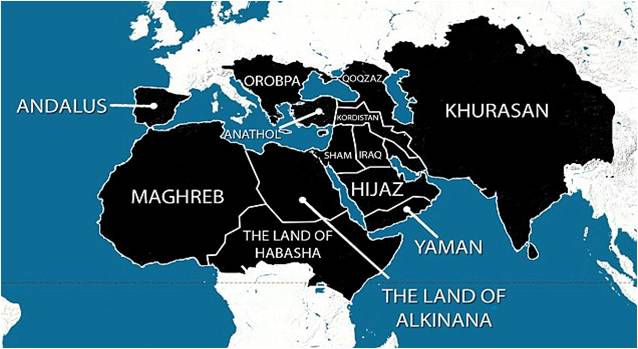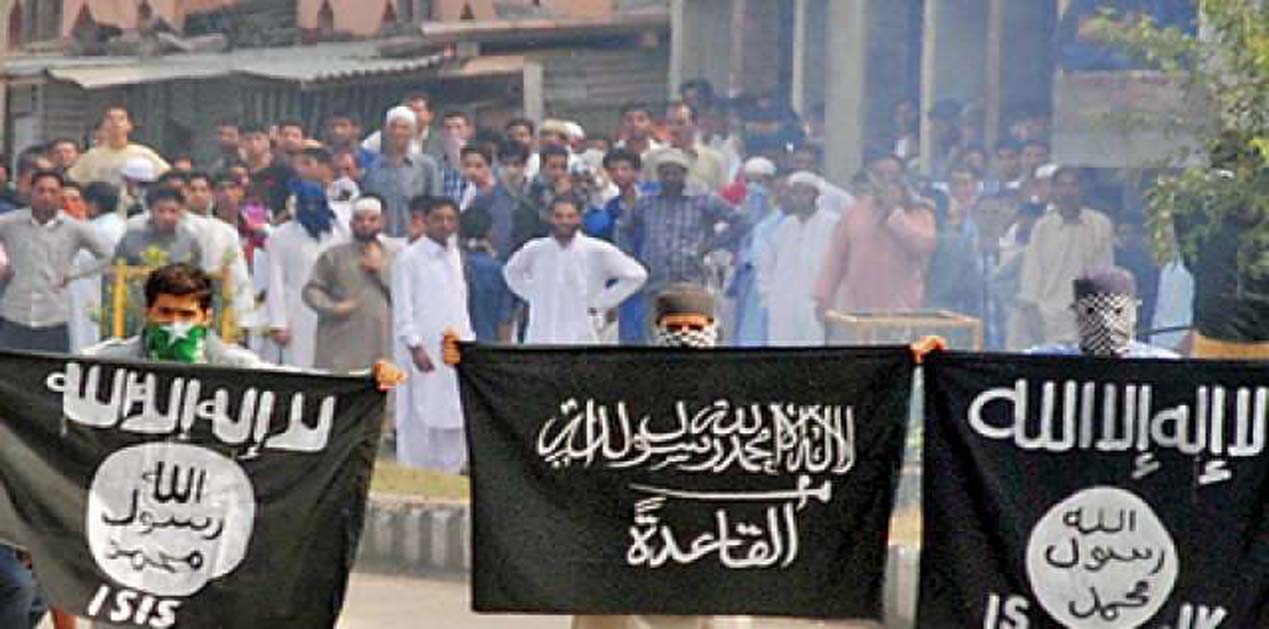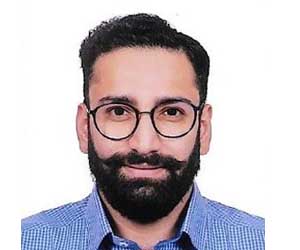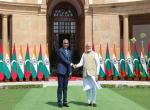Recent Arrest of IS Operatives in India
On November 20, 2017, reacting to a question on growing spread of Islamic (IS) ideology in India, the Union Home Minister Shri Rajnath Singh had said, “Indian Muslims would never allow terrorist outfits [such as Islamic State] to have a base in the country [India].”1This was particularly reassuring in view of continuing reports of existence of IS modules in States like Maharashtra, Karnataka and Kerala. Most of these related to IS sympathisers, motivators and recruiters using different methods and means of spreading radicalisation and their recruitment network. They came to notice for extensive use of social-media platforms to spread the IS ideology and its propaganda material to radicalise and recruit potential jihadists.
These concerns have been reinforced by some recent inputs relating to 2016 and arrests of IS activists from different parts of the country in 2018. Interestingly, the list below does not show any notable event pertaining to the year 2017. Could it be due to the fact that IS in Iraq and Syria was then under serious stress, being nearly wiped out in territories under its control and its fighters deserting in hoards:-
- In May 20162, the IS’ media unit— Amaq Agency - released a 22-minute video featuring 14 terrorists of Indian-origin with Kalashnikov rifles and ‘black flag’ of IS in the background. In the video, they were propagating the cause of jihad on India to avenge the alleged atrocities on the Muslim community including events related to 1992 demolition of Babri Masjid in Uttar Pradesh, and the post Godhra riots in Gujarat. The video warned the Indian government about the upcoming wave of terrorist attacks on Indian soil.
- In July 2016, India’s National Investigation Agency (NIA) filed an investigation report that established a link between Shariful Islam Khalid and an Indian IS militant—Abu Musa aka Mohammad Mosiuddin. Abu Musa was arrested in July 2016 from West Bengal and confessed to his connection with Khalid. Musa, during interrogation, revealed that in May 2016, Khalid instructed him to carry out lone-wolf attacks on foreign nationals in India.
- On 04 April 2018, NIA had arrested seven students of Jamia Arabia Madrasa in Banda District in Uttar Pradesh for interrogation regarding an alumnus of the Madrasa—Tauseef Malik3, who was arrested by the NIA in December 2017 in Kashmir for his involvement in a terror-related case.
- Also, in December 2018, the NIA carried out major operations on a number of IS related sleeper cells at 17 locations in Delhi and Uttar Pradesh. In a first of its kind, the NIA arrested 10 suspects belonging to IS-inspired newly formed module— Harkat-ul-Harb-e-Islam (HuHI) led by Mufti Muhammad Suhail aka Hazrath, employed as an Islamic teacher at a Madrasa in Amroha district of Uttar Pradesh. The NIA and team of local police seized large numbers of arms and ammunitions, large quantities of explosive materials and IS literature from Jaffrabad and Seelampur areas in Delhi and at Amroha, Lucknow, Hapur, and Meerut in Uttar Pradesh.4
- On 22 January 2019, the Maharashtra Anti-Terrorism Squad (ATS) arrested nine persons including a 17-years old youth from Mumbra, Thane and Aurangabad in Maharashtra, for their alleged connection with the IS. Among the nine (Salman Khan, Fahad Shah, Zamen Kutepadi, Mohseen Khan, Mohammad Mazhar Shaikh, Taki Khan, Sarfaraz Ahmed, Zahid Shaikh and a juvenile), three were members of Ummat-e-Mohammadiya (UeM), responsible for recruitment and radicalisation.
- According to the investigation, UeM members were conspiring a mass-level ‘chemical attack’ targeting big gatherings at various places. The plan also included chemical-based poisonous mixture either in water or food at places of big events for the people to consume. 5 According to media report, the UeM group members were very active on the internet and on social-media. The leader and main accused was in direct contact with the IS handler of the group based in Syria. 6
- Soon thereafter, on 26 January, Maharashtra ATS arrested another youth—Tala Potrik - from the suburbs of Mumbra in Thane District, Maharashtra for conspiring an IS-inspired poisoning attack at mass level. 7 Tala Potrik is stated to be an operative of UeM, and during investigation, confessed to have planned a mass-level poison attack in 2018 during a religious event at Shree Mumbreshwar Temple and other places in Mumbai. However, the plan did not succeed and the accused made another plan to execute it on 04 March 2019 on the eve of Maha Shivratri fesstival. 8
In the context of plans to stage mass-casualty operations, it may be recalled that in its report ‘Risk Analysis in Civil Protection’ in January 2017, Germany’s Federal Criminal Police Office (BKA) had highlighted the risk of chemical-based contamination of the water supply to towns and cities or food supply in grocery stores by the Islamist-motivated perpetrators across Europe.9 Later, on 03 September 2017, IS’ Telegram channel—Furat Wilayah - released the third edition of ‘Knights of Lone Jihad’ guide, focusing on the use of poisons for mass-level of terrorist attack.10 The guide advised potential lone-wolf attackers to inject food items for sale in markets, with poison, such as cyanide poison. In fact, on 28 November 2018, Italy’s Anti-Terrorism Police had successfully foiled a possible IS-inspired poison attack by arresting a Lebanese national—Alhaj Ahmad Amin - in the Sardinian town of Macomer, for having links with IS and conspiring a ‘poison’ attack using ricin and anthrax. 11
Initial Foray, How did it Began?
India, where the notion of IS (also known as ISIS) ideology was rather vague until 2014, when it was shaken up with the ‘breaking News’ of the ‘first batch’ of IS sympathisers comprising four Indian youth—Areeb Majeed, Shaheen Tanki, Fahad Sheikh, and Aman Tandel, all residents of Kalyan in Maharashtra - having travelled and joined theIS (then-ISIS) in Iraq. All of them were in their 20s, educated and they cited different reasons to their families before departing for Iraq. According to media report, it was part of ‘pilgrimage’, that all the four left Mumbai for Baghdad (in Iraq) on 23 May 2014. 12
This happened even before (though just by a month) the June 2014 declaration of the caliphate by IS’ self-claimed Khalif Abu Bakr al-Baghdadi and his call to Muslims around the world to do the Hijrat or Hijrah13 to the land of Islamic State. Large number of Muslims and ‘converted’ Muslims from different countries in Middle-East, Western Europe and United Kingdom, responded positively to Baghdadi’s call and travelled to the IS-controlled territories in Iraq and Syria. In 2014-2015, mass of fighters joined IS for the cause of jihad against the infidels and to complete the IS’s vision map of the ‘Islamic Caliphate’ over the Middle-East, North Africa, parts of Europe and South Asia by the year 2020. 14

[Source: Daily Mail UK]
IS Ideology Spreads Deeper and Wider
As the narrative recorded in the initial paragraphs above suggests, IS influence in India, particularly its highly radicalised ideology, has travelled deeper and wider to different parts of the country, at a surprisingly rapid pace too. There was initial apprehension in India and in the region that Baghdadi’s new outfit, with rapid acquisition of vast territories of land, overflowing treasury with illegally sold oil, growing number of local and foreign fighters, brutal repression of dissent and high-profile acts of terror being successfully executed in different parts of Europe, UK and some in the US too, would soon acquire a dominant position in the sub-continent. This perception got a boost after both IS and Al-Qaeda, in near simultaneous moves, announced the setting up of their area specific outfits for this region.
AQ and IS Set up Branches in Indian Sub-Continent
Even as religious scholars, security establishments and policy planners started examining the IS driven rapid, indeed disturbing, developments in the Iraq-Syria region and its possible impact/implications for India, two important announcements came from the competing groups of Al-Qaeda (AQ) and IS. They both decided to set up their branches, Al-Qaeda in Indian Subcontinent (AQIS) and Islamic State-Khorasan Province (ISKP) for the Indian sub-continent.
AQIS:
In September 2014, the successor to Osama Bin Laden and core al-Qaeda leader Ayman al-Zawahiri announced the setting up of a separate branch of Al-Qaeda in South Asia, formally naming it AQIS. Indian-born Asim Umar was named its leader. In its report in July 2018, the UN stated that AQIS was made up of hundreds of people who were relatively isolated but the group continues to seek a security loophole for an opportunity to attack. 15
AQIS has since claimed responsibility of some terrorist attacks in Pakistan and Bangladesh. Most of these were against security establishments and secular activists. On 30 June 2016, the US Department of State designated AQIS as a ‘Foreign Terrorist Organisation’ (FTO) and its leader Asim Umar as a ‘specially designated global terrorist’. 16
ISKP:
Within a few months thereafter, in January 2015 the IS also announced the formation of its regional entity— the ISKP or IS-K. This new entity (ISKP) established its core presence in Afghanistan’s eastern region, particularly in Nangarhar Province, which borders the Federally Administered Tribal Areas (FATA) in Pakistan. 17 ISKP is constituted by former militants of Pakistan’s and Taliban’s offshoot Tehrik-e-Taliban Pakistan (TTP). ISKP claimed responsibility of large-scale bombings against the government targets as well the civilian population, mostly consist of Shia population in Afghanistan. After eight months, on 29 September 2015, the US Department of State designated the Islamic State of Iraq and the Levant-Khorasan (ISIL-K) as a FTO.
A number of reports started coming in from Afghanistan suggesting ISKP was launching conventional and suicide attacks in Afghanistan, and challenging the Taliban supremacy. But these were short lived though some occasional claims of successful actions did keep coming in.
On the other hand, IS related news kept pouring in from Bangladesh with some local radical groups claiming allegiance to IS. Most media reports however, related raids carried out by the security forces on suspected hideouts of IS supporters and sympathisers, with recoveries of incriminating material. The most high profile IS action in Bangladesh happened on July 1, 2016, when Holey Artisan Bakery in the upmarket suburb of Dhaka was attacked in a daring manner. This was executed by IS aligned Jammat-ul-Mujahideen Bangladesh (JMB) operatives. In fact, only recently, on 25 January 2019, Bangladesh’s Rapid Action Battalion (RAB) arrested Shariful Islam Khalid aka Abu Suleiman, an operative of Jammat-ul-Mujahideen Bangladesh (JMB) in connection with that case.
As far as India is concerned, all said and done, for a country with world’s third largest Muslim population, the number of detected modules of around 100 odd youth arrested, did not ring alarm bells. Therefore, police and intelligence agencies continued to keep close watch on the Internet and other cyber-based communication mediums such as WhatsApp, Viber, and Telegram through which the terrorist organisations indoctrinated the Indian Muslim youth. The agencies mostly resorted to non-kinetic methods of advising the families and the religious leaders to deal with them as part of their de-radicalisation campaign.
In Srinagar however, a trend was noticed of agitating groups frequently waving the black IS flags with some reports suggesting/speculating the formation of a pro-IS entities in the Valley. There are a few people in Kashmir who claim to have ‘met Kashmiris who fought alongside IS fighters in the battles of Mosul and Fallujah’. While the veracity of such claims is difficult to establish, this trend is not new. It may be recalled that the Arab Spring movement that started in Tunisia and rapidly spread across the Arab world, was closely followed in Kashmir with the youth agitation of 2008 being largely influenced from the happenings in that part of the world. In more recent times, the Baghdadi phenomenon in Syria-Iraq too found a quick resonance in the Valley. In visual terms, the black flag of IS has almost started competing with the green Pakistani, not in terms of the actual followings of these symbolic displays but purely as an irritant to the authorities18 .
In fact, the better identified group in Kashmir with pronounced radicalised agenda is led by Zakir Musa, a former Hizb-ul-Mujahideen (HM) commander who left HM to form Ansar Ghazwat-ul-Hind (AGuH). This is in ideologically terms closely affiliated to Al-Qaeda than with IS. Musa, today, represents a significant ideological shift in the thinking of the Kashmiri youth. Against the old Hurriyat and nationalist doctrines of ‘Azadi baraye Pakistan’ (Kashmir joins Pakistan) and ‘Azadi baraye Kashmir’ (Independent Kashmir), Musa came out with the idea of ‘Azadi baraye Islam’ (Islamic Kashmir). Majority of his supporters are in the age group of 16-24 years but also include doctors and engineers. His focus is mainly on religious purity. He wants to bring the real Islam in Kashmir19 .
Recent Trends; Cause for Worry?
In the backdrop of the recent unearthing of a number of IS modules from different parts of the country as compiled above, read along with the earlier trends noticed over the last four years, a reasonable question arises whether the IS phenomenon, particularly its highly radicalised ideology, has come to stay in India?
It is generally argued by subject experts in India that the role of Madrasas in disseminating the mis-interpretation of Islam is as critical as the cyber-based propaganda unleashed by the IS. This also included the damaging role of the social media. As far as the Madrasas are concerned, the Uttar Pradesh’s Shia Waqf Board Chairman Waseem Rizvi had written a letter to the Prime Minister Narendra Modi, stating, “If Madrasas are not shut down, the ISIS/IS influence will grow and in [next] 15 years, more than half of Muslim population in India will be influenced by the IS ideology”. 20 While indiscriminate closing down Madrassas may not be the recommended line of action, there certainly seems to be a need for the community and the religious leaders to closely monitor the activities of some of the identified ones for activities highly prejudicial to the core values of what is cherished as ‘Indian Islam’.
It is also agreed that the community needs a well-conceived programme of de-radicalisation. In the State of Uttar Pradesh, the Anti-Terrorism Squad (ATS) initiated a de-radicalised programme—Ghar Wapsi or ‘home coming’, under which the community partners including parents, friends of the radicalised youth, and religious leaders plays an important role in the process.21 Likewise, the Maharashtra ATS came up with an advertisement video with an awareness of online radicalisation. 22 At the end of the advertisement video, well known Indian celebrities urged parents, friends to be responsible and stay alerted regarding their children’s and friend’s online activities.
Likewise, there have been several schemes adopted by both, the law enforcement agencies and the Government of India, through a variety of mediums to help de-radicalise the youth from the IS ideology. The Government of India came up with an idea to design a counter-radicalisation programme, somewhat similar to the programme implemented by the Saudi Arabia and the United Kingdom (UK). In 2017, the Union Ministry of Home Affairs set up its ‘Counter-Terrorism and Counter-Radicalisation (CT-CR) Division23 which works on programmes to counter extremism with the involvement of State government, security agencies and the community. On the community part, the Islamic organisations and religious leaders are encouraged to ensure that the religious texts or teachings are not misinterpreted to further for radicalisation. 24
According to a news report of March 201825 , the Uzbekistan Government invited India to join its wide-range de-radicalisation programme. The programme consists of training of the Imams to disseminate the true teachings of Islam which are misinterpreted by the radical extremist groups.
Conclusion
What is required is to have a fresh look at the existing initiatives with a view to further fine-tuning them, by learning from the best practices evolved and practised in other societies similarly affected by the IS ideology. The problem of growing radicalisation is real and requires delicate yet effective handling.
Countries like India can draw some comfort in the fact that the Baghdadi-led phenomenon in Iraq and Syria may be in its last legs at least in terms of their physical control of territories, funds and fighting force. In this connection it may be noted that even US President Donald Trump has recently declared in a video posted on his Twitter account, declared, “We have won against ISIS. Our boys, our young women, our men — they’re all coming back, and they’re coming back now.” 26
Yet, unearthing of sleeper cells and arrests of IS operatives or sympathisers are matters of concern from national security point-of-view. Dismantling of indigenous Islamist terrorist groups like Indian Mujahideen (IM) and Student Islamic Movement of India (SIMI) has minimised the risk of IS threat, but on the other hand, emergence of groups like HuHI and UeM represents the continuous process of radicalisation and jihadi ideology from transnational terrorist organisation like IS. IS’ roots are deep and concealed. India cannot afford to ignore the recent developments and must assess and devise methods to contain it in the future.
References:
- PTI, “Rajnath dismisses reports of ISIS presence in Kashmir”, The Pioneer, 21 November 2017, Available from: https://www.dailypioneer.com/2017/india/rajnath-dismisses-reports-of-isis-presence-in-kashmir.html
- PTI, “ISIS releases video showing Indian jihadists fighting in Syria”, India Today, 20 May 2016, Available from: https://www.indiatoday.in/pti-feed/story/isis-releases-video-showing-indian-jihadists-fighting-in-syria-612095-2016-05-20
- “NIA picked seven Kashmiri residents studying in Jamia Arabia seminary”, The Pioneer, 06 April 2018, Available from: https://www.dailypioneer.com/2018/state-editions/nia-picked-seven-kashmiri-residents-studying-in-jamia-arabia-seminary.html
- “NIA bursts ISIS-inspired terror module, nabs 10 accused”, United News of India, 26 December 2018, Available from: http://www.uniindia.com/nia-bursts-isis-inspired-terror-module-nabs-10-accused/india/news/1449657.html
- PTI, “IS suspects were planning mass casualty attacks using chemicals, claims ATS”, The Week, 23 January 2019, Available from: https://www.theweek.in/news/india/2019/01/23/is-suspects-planned-massive-attacks-was-kumbh-mela-in-target-list.html
- Ibid.
- Shiv Kumar, “Another arrest in Mumbai terror plot”, The Tribune, 27 January 2019, Available at: https://www.tribuneindia.com/news/nation/another-arrest-in-mumbai-terror-plot/719693.html
- “Arrested ISIS suspects planned to poison ‘maha prasad’ at a Mumbra temple: Maharashtra ATS sources”, Times Now News, 07 February 2019, Available from: https://www.timesnownews.com/india/article/maharashtra-ats-news-10-suspects-poison-prasad-shree-mumbreshwar-mandir-trust-mumbra-thane-shivratri-isis-suspects-arrested-news/361294
- “Die Regierung warnt vor Terror mit Chemikalien [German translation of: The government warns against terror with chemicals]” , WELT, 24 January 2017, Available from: https://www.welt.de/politik/deutschland/article161450774/Die-Regierung-warnt-vor-Terror-mit-Chemikalien.html
- “Pro-ISIS Telegram Channel Suggests Lone Wolves Poison Food in Malls with Cyanide”, MEMRI, Available from: https://www.memri.org/reports/jihad-and-terrorism-threat-monitor-jttm-weekend-summary-266
- Angelo Amante, “Italian police arrest Lebanese man suspected of planning poison attack”, Reuters, 28 November 2018, Available from: https://www.reuters.com/article/us-italy-security-arrest/italian-police-arrest-lebanese-man-suspected-of-planning-poison-attack-idUSKCN1NX2F1
- “Maharashtra concerned over four Muslim youth suspected to be in Iraq”, Muslim Mirror, 14 July 2014, Available from: http://muslimmirror.com/eng/maharashtra-concerned-over-four-muslim-youth-suspected-to-be-in-iraq/
- Arabic word for migration.
- Mark Aitken, “ISIS unveils chilling new map of Europe as it plans for world domination by 2020”, The Mirror, 09 August 2015, Available from: https://www.mirror.co.uk/news/world-news/isis-unveils-chilling-new-map-6224227
- UN Report- S/2018/705, 27 July 2018, Available from: https://www.undocs.org/S/2018/705
- “Individuals and Entities Designated by the State Department under E.O. 13224”, US Department of State, Available from: https://www.state.gov/j/ct/rls/other/des/143210.htm
- “Al Qaeda and Islamic State Affiliates in Afghanistan”, Congressional Research Service, 23 August 2018, Available from: https://fas.org/sgp/crs/row/IF10604.pdf
- Abhinav Pandya, “Militancy in Kashmir- A Study”, Vivekananda International Foundation, March 2019, Available from: https://www.vifindia.org/sites/default/files/Militancy-in-Kashmir.pdf
- Ibid.
- HT, “Ban madrasas or ISIS influence will grow in India: Shia Waqf board chief”, Hindustan Times, 22 January 2019, Available at: https://www.hindustantimes.com/india-news/ban-madrasas-or-isis-influence-will-grow-in-india-shia-leader/story-PM06Uss3vrQayeCEcLgEgN.html
- Shashank Shekhar, “Uttar Pradesh anti-terror squad plans ‘home-coming’ program to de-radicalise youths from ISIS ideology to Indian nationalism”, Mail Online India, 27 April 2017, Available from: https://www.dailymail.co.uk/indiahome/indianews/article-4449452/Uttar-Pradesh-anti-terror-squad-plans-home-coming-program.html
- Mustafa Shaikh, “To check ISIS radicalization online, Maharashtra ATS come up with a video”, India Today, 21 June 2017, available from: https://www.indiatoday.in/india/story/maharashtra-ats-video-to-check-isis-online-radicalisation-983896-2017-06-21
- Namrata Biji Ahuja, “A Radical Cure”, The Week, 05 August 2018, Available at: https://www.theweek.in/theweek/cover/2018/07/26/a-radical-cure.html
- Ibid.
- Dipanjan R. Chaudhary, “Uzbekistan invites India to join deradicalisation programme”, The Economic Times, 31 March 2018, Available from: https://economictimes.indiatimes.com/news/defence/uzbekistan-invites-india-to-join-deradicalisation-programme/articleshow/63550631.cms
- Trump, Donald J. (@realDonaldTrump). 2018. “After historic victories against ISIS, it’s time to bring our great young people home!” Twitter, 19 December 2018, 03:10 p.m. Available from: https://twitter.com/realDonaldTrump/status/1075528854402256896
Image Source: https://images.outlookindia.com/public/uploads/newsimages/ISIS_JK.jpg











Post new comment